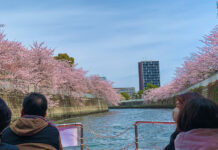The northeastern reaches of Tokyo are home to the oft-overlooked Katsushika Ward, bordered by the Edo and Ara Rivers and dissected by the Oba and Naka Rivers. This abundance of water blesses Katsushika with pretty fertile ground — perfect for growing irises (or shōbu), in fact. Even as far back as the Edo Period, nature enthusiasts have been visiting this ward’s many shōbu-en (iris gardens) to revel in the seasonal floral displays. But the biggest — and arguably the best — spot to see these pretty perennials has got to be Mizumoto Park.
Mizumoto Park
Created in 1965, Mizumoto Park covers a whopping 227 acres or 967m2, making it the largest park in all of Tokyo’s 23 wards. Its sprawling grounds feature a number of tree-lined waterways including a river, ponds, streams, and even a fishing reservoir complete with languid fishers, all of which help you to forget you’re in one of the biggest cities in the world.

There’s also a bird sanctuary, fish pond, campground, playgrounds, a BBQ area, and a metasequoia forest featuring 1,500 “living fossil” trees. In 1939, 65 million-year-old fossils of these trees were discovered. Less than a decade later, a living specimen was identified in China and the propagation commenced.
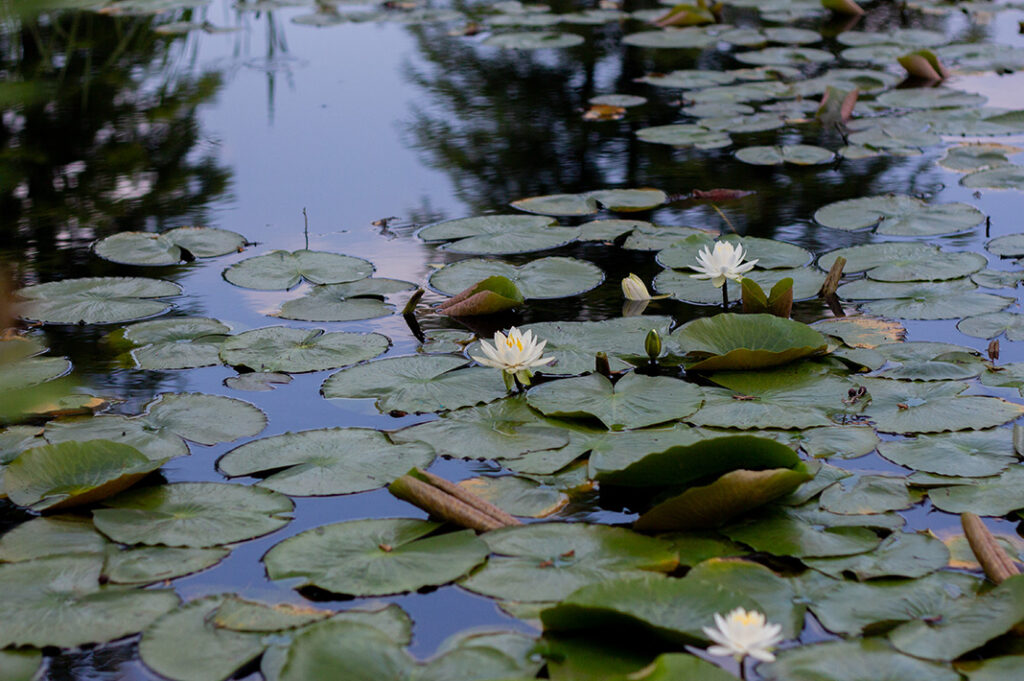
As with many Japanese parks and gardens, the landscape morphs throughout the calendar year. In summertime you’ll see cattails swaying in the breeze and vibrant hydrangea puffs dotting the grounds. Then, as the weather cools, the groves of trees deepen into hues of yellow, orange, and red. Winter camelia give way to sakura which then give way to irises, and the cycle continues.

Mizumoto Iris Garden
The breeding trend in the Edo Period (1603-1867) saw the number of Japanese iris varieties grow by hundreds, and these days there are now over 2,000 to enjoy. The best place to get eyes on some different types is at Mizumoto Park, the home of Tōkyō’s largest iris garden which features around 14,000 iris of 100 varieties.
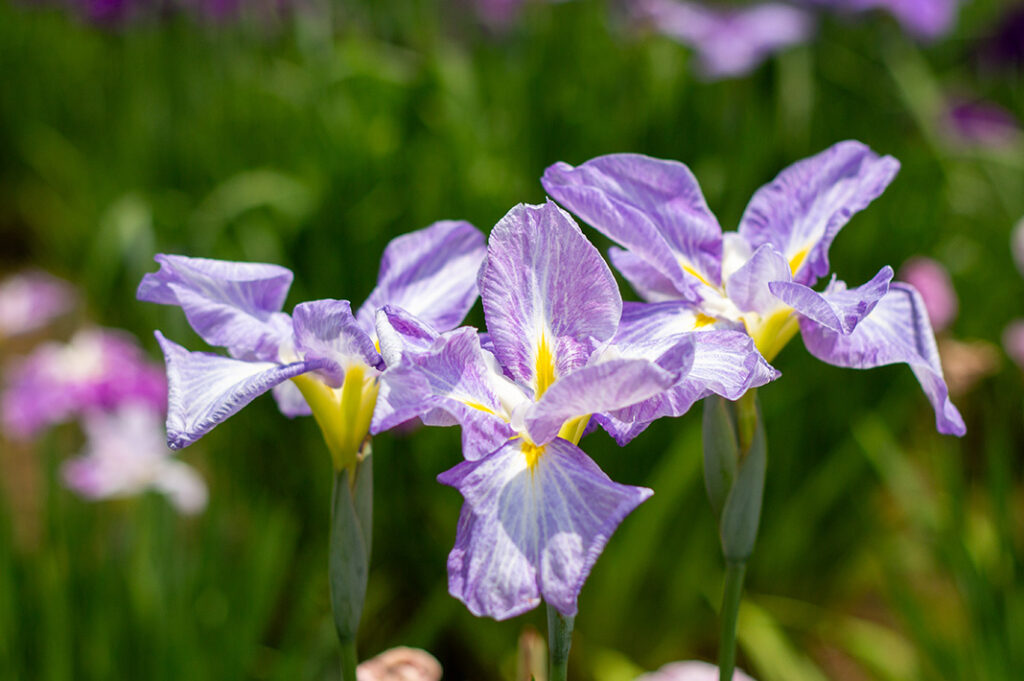
Wooden boardwalks weave through the blooms, surrounding you with a sea of violets, whites, and yellows. If you’re artistically inclined, bring along your sketchbook or easel and join the others in capturing the moment on paper.
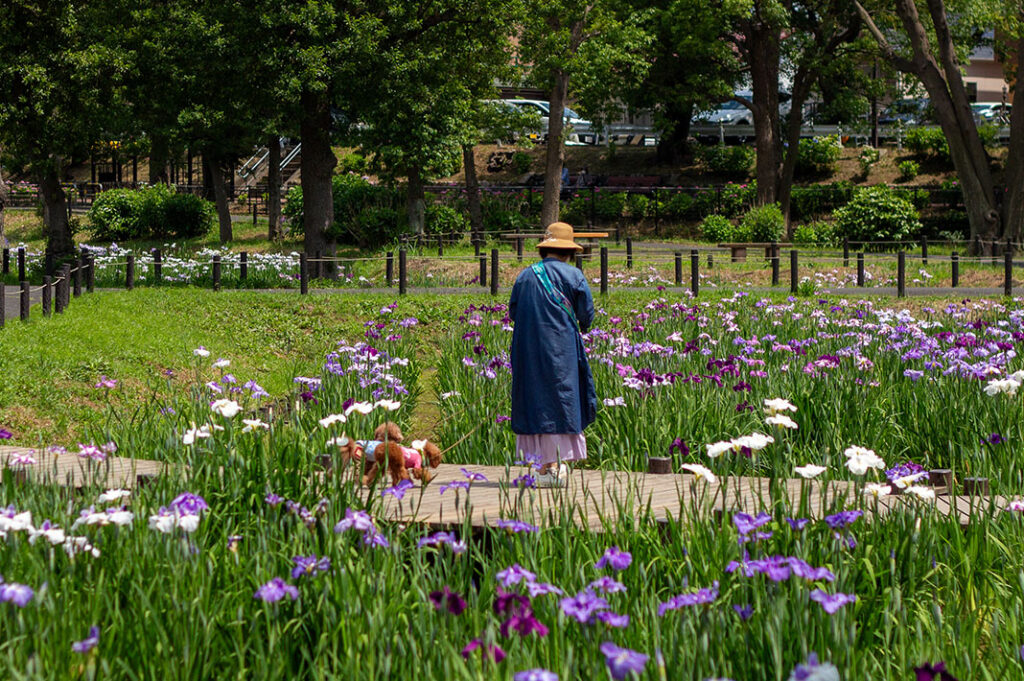
Strolling around in this timeless act of enjoying nature, you can’t help but think of iris’ presence in many poems and artwork over the centuries, like Hiroshige’s One Hundred Famous Views of Edo series or Ogata Korin’s Irises.
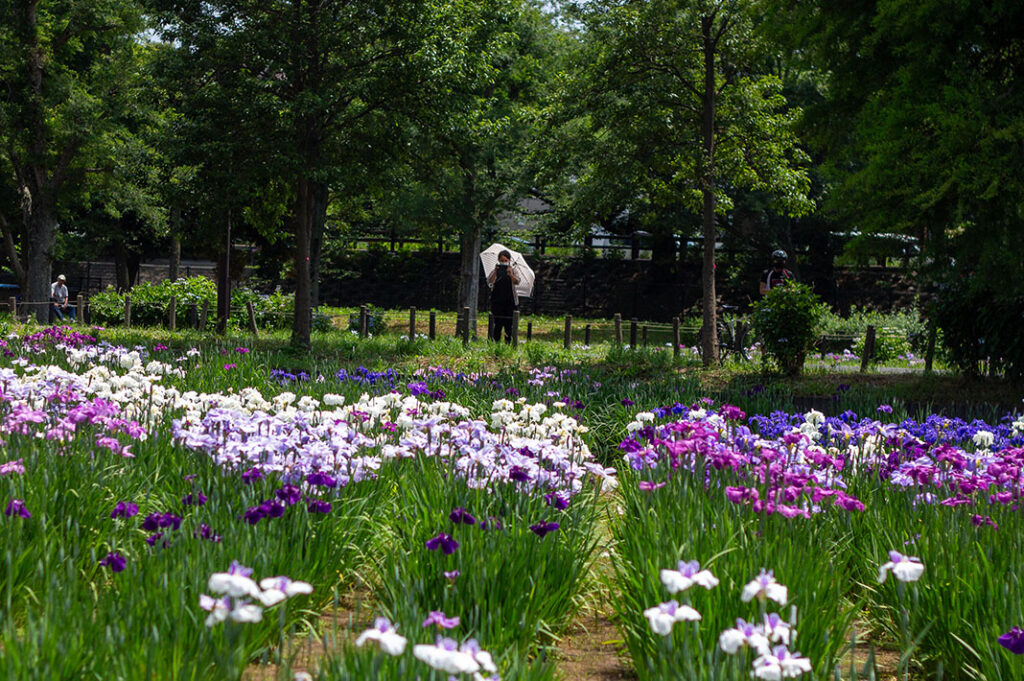
When to go
The park is stunning year-round but if you want to see irises, aim for early June. They are typically at their peak between June 1 and June 15, but it’s always best to check Google Maps or social media for real-time information.
Every year, Katsushika Ward plays host to the Katsushika Shōbu Matsuri (Iris Festival) which is held across Mizumoto Park and the nearby Horikiri Iris Garden. It runs from late May to mid-June but you can find more details on the Katsushika Ward website.
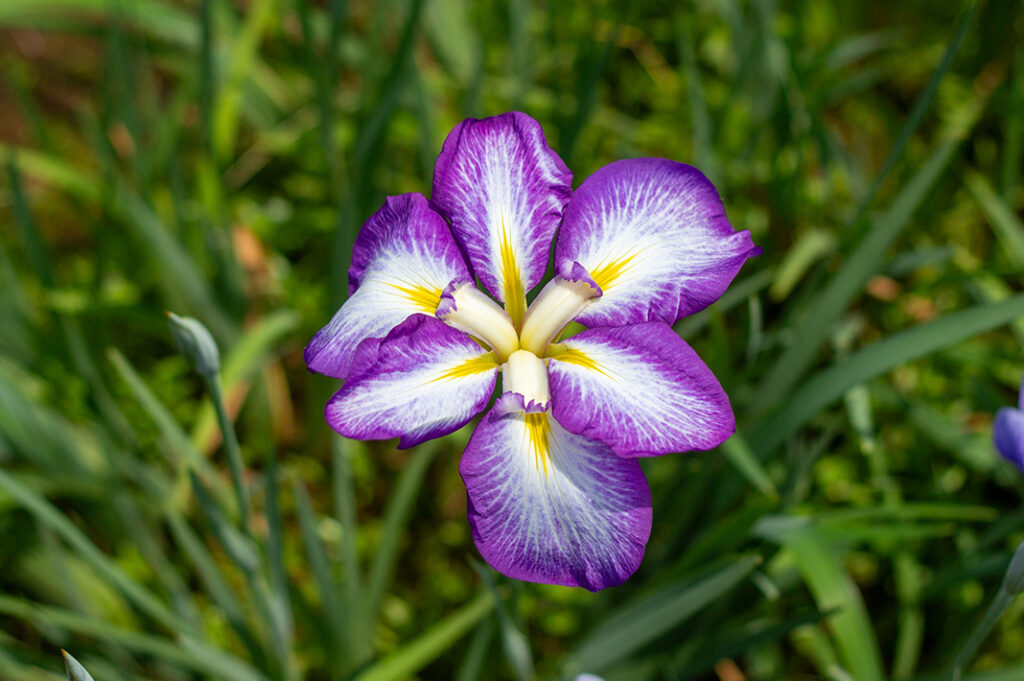
Other popular places to see irises in Tōkyō
While Mizumoto Park is a fantastic outing, it is a little far depending on where you are based. Luckily there are many more iris gardens around town, such as:
- Meiji Jingu Gyoen, Shibuya (map). Read more about it here.
- Nezu Museum Garden, Minami Aoyama (map)
- Koishikawa Korakuen Garden, Korakuen (map)
- Shōbunuma Park, Adachi (map) — this one is near Katsushika.
How to get to Mizumoto Park:
The closest station to Mizumoto Park is Kanamachi Station on the Metro Chiyoda Line / JR Joban Line. From Kanamachi station, take the Keisei Bus (bound for Togasaki Station or Nishi Mizumoto 3-chome) and get off at “Mizumoto Park”, then walk seven minutes). Alternatively, you could walk 20 minutes (1.4km) through the local neighbourhood and stop for a brew at Bicycle Coffee.
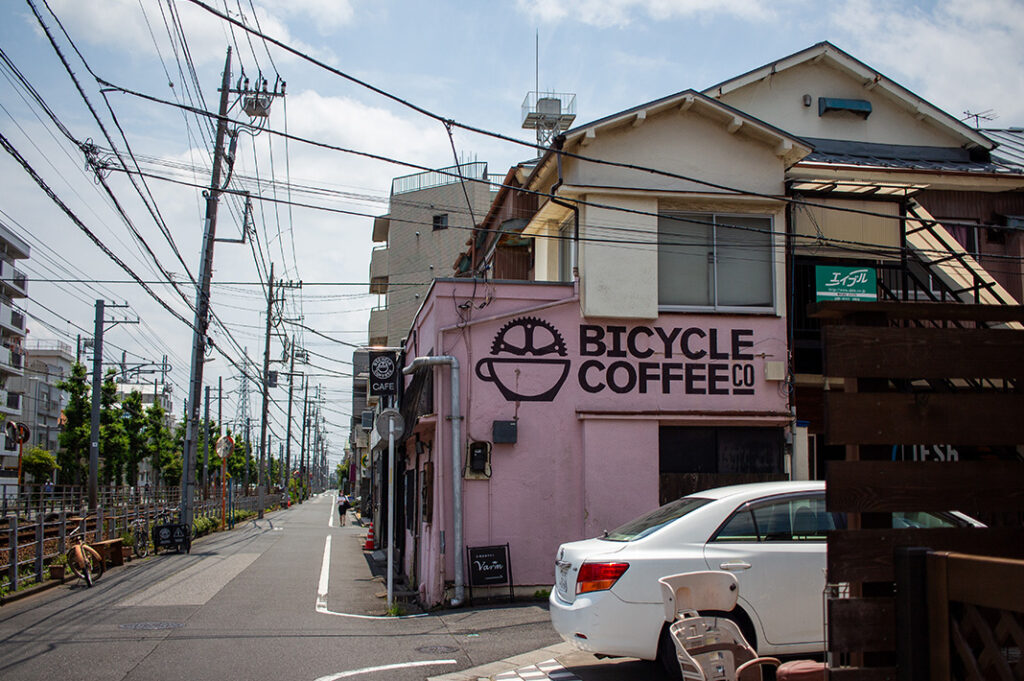

Another great day trip in the Katsushika area is Shibamata, which features a traditional shopping street, incredible wood carvings at the temple, and many more surprises for those who choose to explore.
Name: Mizumoto Park
Address: 3-2 Mizumotokoen, Katsushika City, Tokyo 125-0034
Google Maps: https://maps.app.goo.gl/Pbf4PTFf1Wus9uGU7
Open: 24 hours (iris season is late May to mid-June)
Admission: Free
Website: https://www.tokyo-park.or.jp/park/format/index041.html
Post by Japan Journeys.




